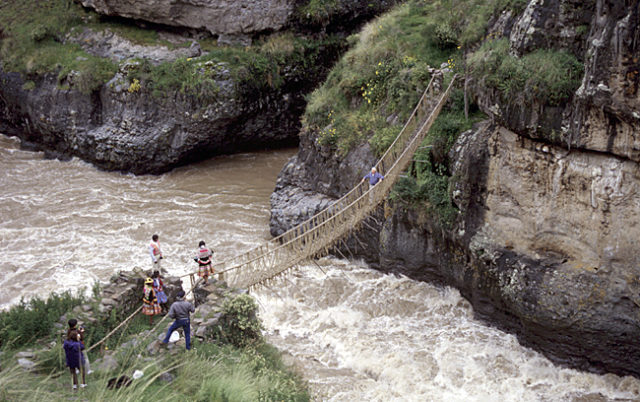Bridges are one of the oldest structures built by humans. It is believed that the idea of bridge-building came from nature itself, as people used fallen logs to get over certain obstacles.
The first bridges were built by cutting logs, wooden planks, and later stones. Today, the technology of building bridges is so advanced that plans for 3D printed bridges have already been made.



The longest bridge ever built is the Lake Pontchartrain Causeway, with a length of 23.8 miles. The oldest bridge in the world still in use is a bridge in Izmir, Turkey, used to cross over the Meles River, which was built circa 850 BC. Remains of even older bridges have been found in Greece, but these bridges, constructed circa 1600 BC, are not in use today. The Romans are known as the best bridge builders of the ancient world. They built arch bridges and aqueducts, and some of those bridges stand even today.
Bridges can differ in their use, construction type, and building material. Some of the oldest and most interesting bridges ever built are rope bridges. Originally built by the Inca civilization in the Andes Mountains in Peru, South America. These constructions were simple suspension bridges, build over rivers, gorges, and canyons. The Inca did not use wheeled transport and moved around on foot. The rope bridges were a part of the Inca road system, and they show how advanced and innovative this nation was.

The Inca used the vegetation surrounding them to build bridges. Using natural fiber, they created ropes strong enough to hold the weight of people and their livestock. The bridges were enhanced with wooden floors and were attached to stone anchors on each side of the canyon. Enforced with additional rope cables and branches, the bridges were strong enough to carry the horse-riding Spaniards during their conquests.

The Inca paid attention to their rope bridges, as some villagers were employed as bridge maintainers. Traditionally, the ropes were changed each and every year, and this is what made the bridges durable and reliable.
Today, only one of these remarkable creations survives. Q’iswa Chaka, the rope bridge spanning over the Apurimac River in Peru, is the only remaining Inca rope bridge. Although there is a modern bridge constructed nearby, the locals still use this ancient bridge, made out of Peruvian feather grass and twisted, dried agave plants.

The secret behind the durability of this bridges lies behind the care several families take for it. Each and every year, in June, the locals perform reconstruction work on Q’iswa Chaka. Some families create new grass ropes and cables; some prepare the wooden floor. Once seen as a form of tax, the reconstruction today represents a volunteering, communal effort. The builders say that they reconstruct Q’iswa Chaka to honor the Pachamama (Earth Mother) and their ancestors.

The bridge has become a tourist attraction, and a small fee is paid by visitors to use the bridge. In 2009, the government of Peru recognized the bridge as a cultural heritage site, protecting it and providing sponsorship for its reconstruction.
The rebuilding event became internationally famous, so in 2014 a production of a documentary movie called The Last Bridge Master began, supported by the BBC and Nova Productions.
